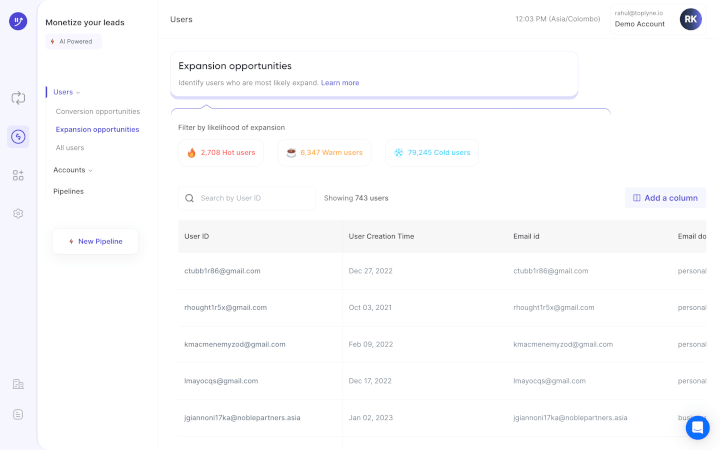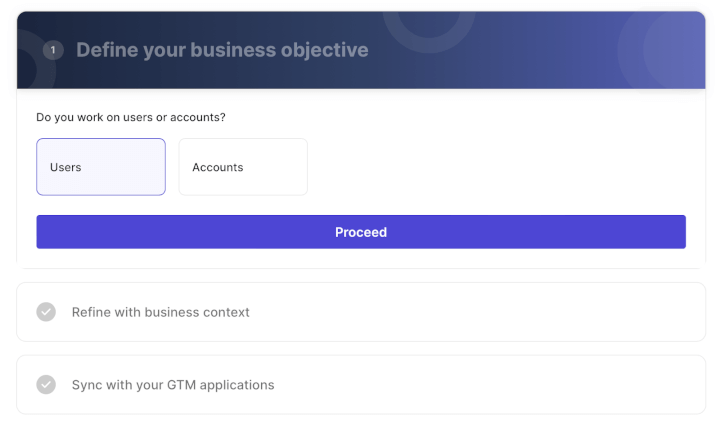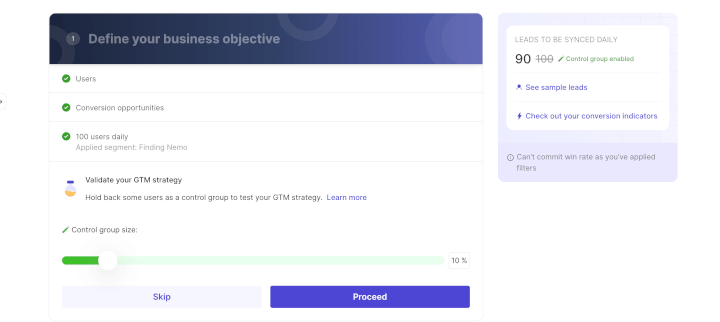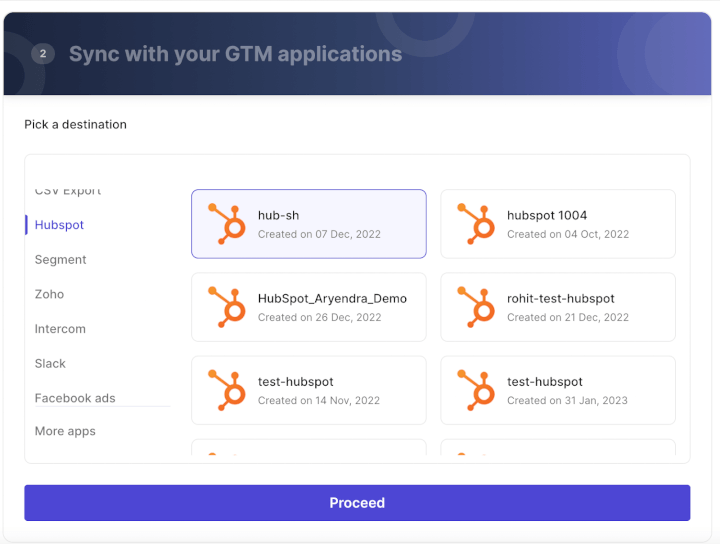What Is Win to Loss Ratio? Get the Formula + Examples

Is your win ratio high enough to call your sales efforts a success?
Your sales department may have perfected the tactics to capture leads like clockwork, but these might not indicate how effectively you’re driving conversions.
![[optimize output image]](https://cdn.prod.website-files.com/65a80db6a97ea2f4fd5302cd/65a80db6a97ea2f4fd531227_64ad867010e8464ed0225550_640b772bd7d422bbf6cd8f20_ezgif-2-0de6723c9a.gif)
Fortunately, by calculating your win to loss ratio, you can identify what actually worked for your sales team… and what didn’t.
In this article, you’ll learn what win to loss ratio is, how to effectively track your sales win rate and losses, and the four elements contributing to wins and losses.
We’ll also introduce an excellent tool to boost your winning percentage and drive more conversions.
Let’s dive right in!
What Is Win to Loss Ratio?
In the SaaS space, win to loss ratio refers to the ratio of lost to won opportunities.
It’s the total number of deals in the sales cycle that ended in conversions versus those that didn’t.
![[optimize output image]](https://cdn.prod.website-files.com/65a80db6a97ea2f4fd5302cd/65a80db6a97ea2f4fd531269_64ad867010e8464ed02255ff_640b77afdd97ee34a794e66b_ezgif-2-8fcad34f1a.gif)
With that said, companies are free to define what they count as wins and losses.
For example, one company might consider a loss as a sale that didn’t close, but another may still consider the opportunity to be open.
So what’s the answer?
Your criteria for win loss analysis isn’t set in stone. It mainly depends on your priorities and the growth stage of your company (more on that later).
But first, let’s go over some basics.
How to Calculate Win to Loss Ratio
You don’t need a winning percentage calculator to determine your win loss rates. All you need to do is divide the number of opportunities you’ve won or converted by every lost opportunity.
However, you should only count a completed deal or those with definitive outcomes.
If a deal is still in progress, don’t count it as won until it’s closed.
The Win Loss Ratio Formula:
Win/Loss Ratio = No. of Opportunities Won / No. of Opportunities Lost
The win loss ratio can be depicted as a fraction (e.g. 5/8 or 5:8) or as the result of a fraction (e.g. 0.62).
Note: The win loss ratio doesn’t tell you the percentage of wins. That is called win rate. (More on that later.)
Examples of Calculating Win Loss Ratios
Imagine that you’ve acquired eight new customers for your product at the close of the quarter and signed contracts with them, but you couldn’t close the deal with 10 of your leads.
In this scenario, your ratio would be:
Number of acquired clients (won opportunities) Number of lost clients (lost opportunities)
= 8 / 10 = 0.8

On the other hand, if you managed to close nine deals and lost the same amount over the same period, your calculation would be:
Number of acquired clients (won opportunities) Number of lost clients (lost opportunities)
= 9 / 9 = 1
Finally, if you acquired 10 new clients but lost eight other clients, your calculation would be:
Number of acquired clients (won opportunities) Number of lost clients (lost opportunities)
= 10 / 8 = 1.25
Here’s what you can learn from these examples:
- If you have more losses than wins, your win loss ratio will be below 1
- If your total number of wins is equal to your losses, your ratio will be exactly 1
- If your wins are higher than your losses, your win/loss ratio will be higher than 1
Why Calculate Win Loss Ratio?
Win loss analysis can give you insight into the ever-evolving wants of your customers. Your win ratio indicates why one type of sales strategy yielded profit while others didn’t.
Additionally, this analysis ties into calculating your risk/reward ratio, which can help you forecast win probability and avoid likely losses.
Tracking a declining ratio can also help you detect red flags, identify bottlenecks, and address these loss reasons at the earliest. Meanwhile, a high win rate is a sign that things are working.
It’s also a handy metric to benchmark your performance against other companies and see if you risk falling short of the competition.
Win/Loss Ratio VS. Win Rate: What’s the Difference?
Win/loss ratio and win rate are often confused because they both give you an idea of how much profit you’re generating.
However, win rate calculation shows this as a percentage of the total number of deals, while win/loss ratio directly compares the number of wins and losses.
The formula for win percentage is:
Win Rate Calculation= Number of deals won / total number of deals * 100
If your win percentage rate is over 50%, you’re closing more deals than you’re losing.
How To Effectively Track Your Win Loss Ratio
Follow these three simple steps to nail this metric:
1. Clearly Define Won and Lost Opportunities
Let’s say a prospect had a demo, saw a quote, and still declined to make a buying decision.
It’s like how some sports matches result in ties. Some companies will include this contact as a “No Decision” in their win loss rates.
Other companies may count this as a loss.
Which one is best, you ask?
Well, that depends on the growth stage of your company.
For example, startups with fewer leads may want to count “No Decision” prospects as they may still convert later, whereas companies with a wider pool of qualified leads can afford to be more selective.
It doesn’t matter how you count win loss rates as long as you stick by that metric and keep it consistent.
Sometimes you just gotta say…

Tip: In case this seems a little confusing, you can also calculate your success by simply using the win rate.
2. Establish Time Frames
Tick, tock. 🕰️
What’s that?
That’s the sound of an efficient, well-oiled company!
It’s okay if sales leaders track a perpetual win rate, but the cogs of your sale department operate more smoothly if you sort your win ratio into granular time frames, such as:
- Monthly wins
- Quarterly wins
- Yearly wins
Ideally, the calculations of your metrics should inform your team about the time frame you’re working with, and they can easily follow while they’re on the clock.
3. Break Down The Sales Stages
Establishing clearly defined sales stages will give your team a better analysis of the sales cycle. They can look back over the past month, see at which stage a deal fizzled out, and implement strategies to improve that part of the sales process.
A lack of concrete steps is like dancing without learning the routine first. To understand the rhythm of your customers, sort these interactions into stages and categorize accounts according to the proper stage.

But what are the most important stages of the sales cycle?
Here are a few examples:
- Requesting a demo or quote
- Sending a quote
- Revising a quote
- Bringing in the stakeholder
- Sending contract
Okay, but what factors play into boosting your win probability?
How can you avoid losses?
Four Elements That Determine Won and Lost Opportunities
Four essential elements every SaaS company should keep in mind are:
1. Value Proposition
You know how things are on a first date? 😳
You’ve got to have that special something if you want the continued reward of their company.
In the SaaS world, we call that value proposition.
A value proposition is when you provide a service or feature that gets prospects to be like…

So what makes you a smooth operator?
The answer is actually pretty simple.
To hook prospects, your company needs a compelling value proposition — something magnetic that potential customers just can’t resist. It should also be something that your competitors can’t provide.
Often, prospects don’t make a move because they aren’t dissatisfied with the status quo enough to change or start looking for solutions.
If you want to attract a potential customer, you have to get them to want to shake up the status quo. Demonstrate why “same old, same old” isn’t working for them and why they need you.
2. Target Audience
Are you tired of losing opportunities?
Often, your loss reasons come down to how well you know your target audience, whether they be marketing or sales leaders.
It isn’t easy for a sales rep to identify leads with buyer intent.
Many companies promote offers only to receive deafening silence in response, especially if your team doesn’t have easy access to product usage data.
So how do you go from “I’m gonna walk” to…

Make life easier for your sales team and introduce them to a tool that can segment leads according to their specific product usage data.
With this, you can identify and prioritize product qualified leads and see who’s most likely to convert. In the long run, this will save you time and money and lead to a high win rate.
Pro tip: You can automatically spot your most promising conversion opportunities with a kickass tool like Toplyne.
3. Nurturing Process
Racing ahead to the finish line of the sales process can be counterproductive.
Much like speeding can result in an overheated engine, skipping stages of your sales process can cause opportunities to stall.
As they say, patience is its own reward.
So how does this road lead to convertible opportunities? 😉
Whether it’s the discovery stage, the presentation, or the proposal, every single stage is vital to nurture leads into long-term prospects.
For instance, the pitch meeting is a perfect moment for you to demonstrate the real-time value of your product to the client. However, this will only make sense if they’ve been thoroughly briefed on your product’s use cases before this during the earlier stages of the buyer’s journey.
The moral?
Skip any of your lead nurturing steps, and you risk more losses coming your way!
4. CRM System
Most companies will have a CRM (customer relationship management) in place.
However, it may not be working to the advantage of sales leaders.
For instance, an outdated legacy CRM won’t offer a sales rep enough flexibility to exercise their pitching skills. Instead, your reps will be forced to do tedious admin to keep the CRM even barely functional.
Additionally, CRMs can get messy.
Even if you progress with a potential opportunity, storing data across different systems will likely lead to human errors.
Luckily, there’s a clean solution that even Marie Kondo would be proud of.

This isn’t your average software solution.
We’re talking about an unparalleled headless sales AI.
Instead of incurring losses…
Boost Your Win Percentage with Toplyne
Performing a win loss analysis isn’t easy. It takes time and effort to do it right. But the insight you gain can take your reps to a brand-new level of profit.
So how do you rack up a consistently high win rate without breaking a sweat?
Meet Toplyne.
It’s a one-of-a-kind behavioral lead scoring tool that can boost your sales win rate and skyrocket your NRR (net revenue retention) percentage — all with zero change management!
Here’s how companies like Canva and Vercel generate sales pipeline from their self-serve funnel using Toplyne:
- Step 1/7: Create monetization playbooks to surface conversion and expansion opportunities (leads most likely to convert to paying customers, and teams most likely to grow into larger teams)

- Step 2/7: Choose the right leads to target – users (individual users) or accounts (a group of users with an organization).

- Step 3/7: Select the frequency at which you would want leads synced in your GTM apps.

- Step 4/7: Define how many leads you want by either the number of leads or your expected win rate, depending on your sales capacity and GTM strategy.

- Step 5/7: Build custom segments - Build custom segments based on And/Or logic at the deepest level of sub-properties within your product analytics.

- Step 6/7: Validate your GTM strategy - Hold back some users as a control group to test your GTM strategy.

- Step 7/7: Sync your product qualified pipeline into your GTM destinations - CRMs, sales & marketing execution tools, and customer engagement platforms.

Sounds awesome, right?
It’s a fact. You can…
Turn Sale Sins 😈 Into Sale Wins With Toplyne 👼!
Your win loss metric can give you insight into what is (and isn't) working.
But boosting conversion opportunities while minimizing losses can be a tricky game.
So, what can help you achieve victory?
Instead of playing solo, enter multiplayer mode and team up with Toplyne!
This powerful headless sales AI can help you defeat your biggest opponent — churn — and skyrocket your winning percentage, all without any change management.
Tired of coming in second place?
Sign up for Toplyne for free today and get that number-one spot on the leaderboard.



.svg)









.png)